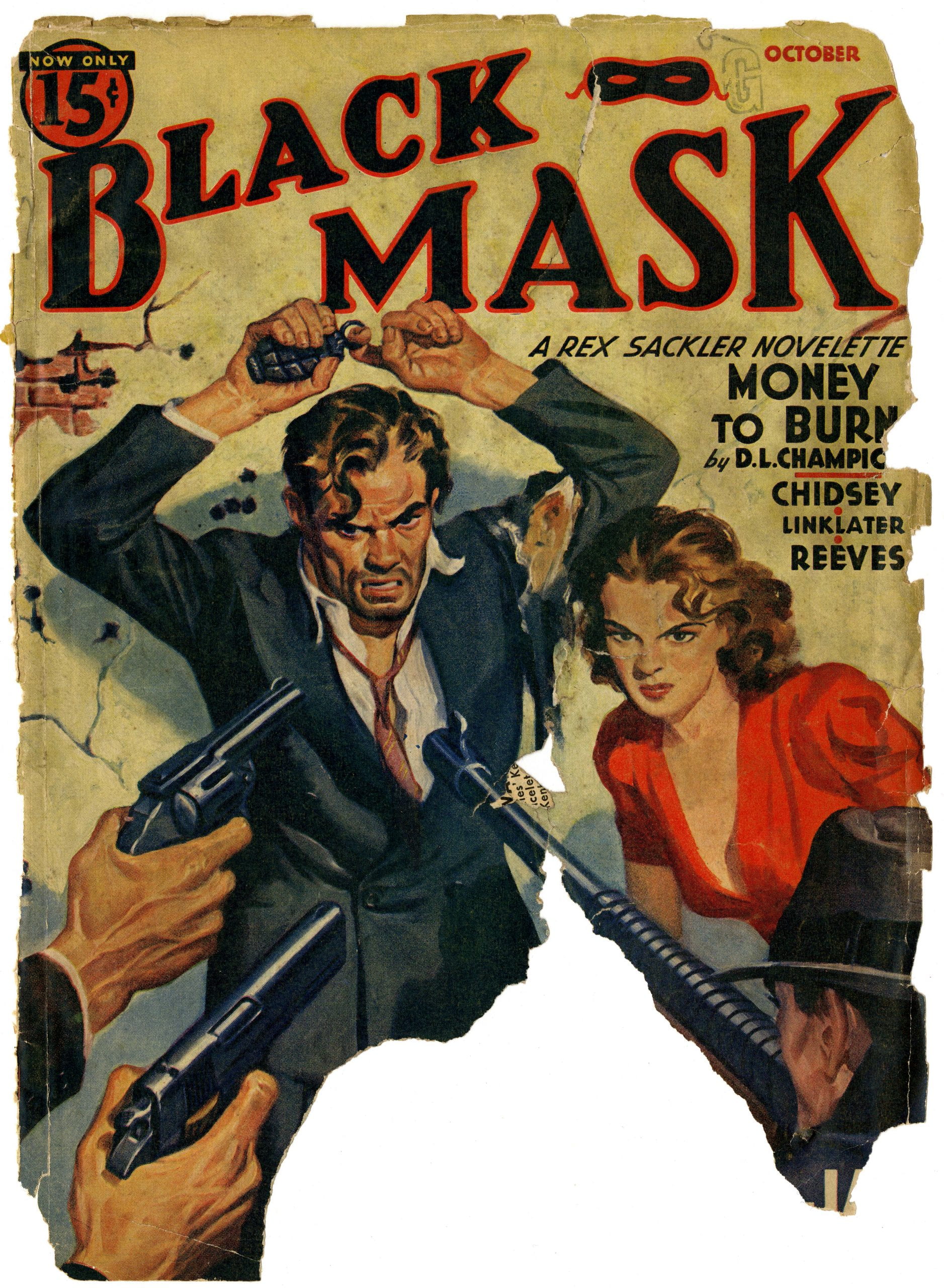This July, a group of rising high school seniors will take JMU Professor Brooks Hefner’s course, Studying Popular Culture: Pulp Magazines at the Summer Honors Institute. The class will be exploring popular fiction of the 20th century and benefit from the university’s large collection of pulp magazines, including Argosy, Astounding Stories, Weird Tales, and the number one detective and crime fiction magazine of the time, Black Mask.
 Published for the first time in April 1920, Black Mask was originally intended to generate money to keep its editors’ literary magazine, Smart Set, afloat. As a strictly money-making venture, it was marketed as “Five magazines in one: the best stories available of adventure, the best mystery and detective stories, the best romances, the best love stories, and the best stories of the occult.” But, after eight issues, creators H.L. Mencken and George Jean Nathan sold the magazine to its publishers for a small profit. A quick series of editors worked to develop a profitable format for the magazine.
Published for the first time in April 1920, Black Mask was originally intended to generate money to keep its editors’ literary magazine, Smart Set, afloat. As a strictly money-making venture, it was marketed as “Five magazines in one: the best stories available of adventure, the best mystery and detective stories, the best romances, the best love stories, and the best stories of the occult.” But, after eight issues, creators H.L. Mencken and George Jean Nathan sold the magazine to its publishers for a small profit. A quick series of editors worked to develop a profitable format for the magazine.
On May 15, 1923, Black Mask published Carroll John Daly’s “Three Fun Terry,” the first tough private detective story ever. Afterward, Daly created Race Williams, who became the inspiration for the hardboiled detective. Soon the magazine shifted further toward crime, specifically detective, fiction, and its content grew darker with more violence and a dryer sense of humor. In 1926, Black Mask was given a new editor, “Cap” Shaw Johnson, who steered the magazine’s creative trajectory toward detective fiction until he was fired in 1936. Johnson believed in the moral responsibility of crime fiction and the stories he published consistently asserted the criminal as villain and law enforcement as hero, partially as a response to rising skepticism about the police.
In 1926, Black Mask was given a new editor, “Cap” Shaw Johnson, who steered the magazine’s creative trajectory toward detective fiction until he was fired in 1936. Johnson believed in the moral responsibility of crime fiction and the stories he published consistently asserted the criminal as villain and law enforcement as hero, partially as a response to rising skepticism about the police.
As the most influential crime magazine of the 20th century,Black Mask helped start the careers of Dashiell Hammett, Raymond Chandler, and more. In 1933, Chandler’s first story, “Blackmailers Don’t Shoot” was published by the magazine. Hammett’s first story, “The Road Home,” was also published by Black Mask under the name of Peter Collinson in December 1922. His famous novel, The Maltese Falcon, was serialized by the magazine in 1929.
By December of 1933 Black Mask was publishing nothing but crime stories. National circulation had risen from 66,000 to 103,000. The magazine saw its peak here in the mid 1930s, as when Johnson left in 1936 so did some of its most popular writers. JMU Special Collections’ growing selection of pulp magazines includes almost 100 issues of Black Mask from its original run between 1920 and 1951. The university is looking to further expand its collection of Black Mask and other pulp magazines, making them available to students and researchers, thereby providing a bevy of reference material on the popular culture of 20th century America.
JMU Special Collections’ growing selection of pulp magazines includes almost 100 issues of Black Mask from its original run between 1920 and 1951. The university is looking to further expand its collection of Black Mask and other pulp magazines, making them available to students and researchers, thereby providing a bevy of reference material on the popular culture of 20th century America.


